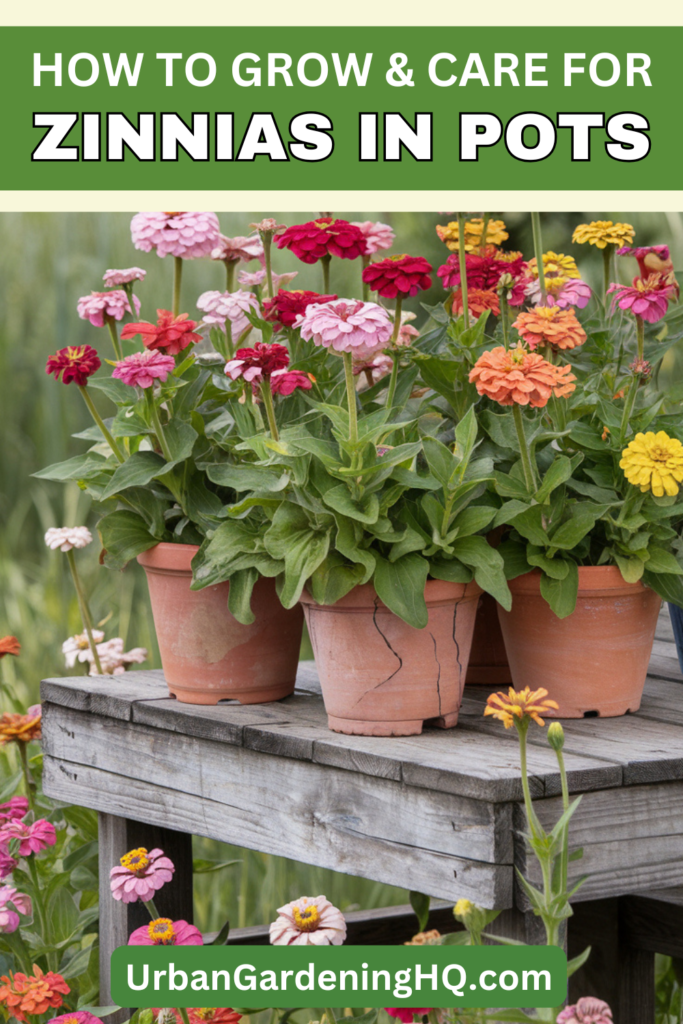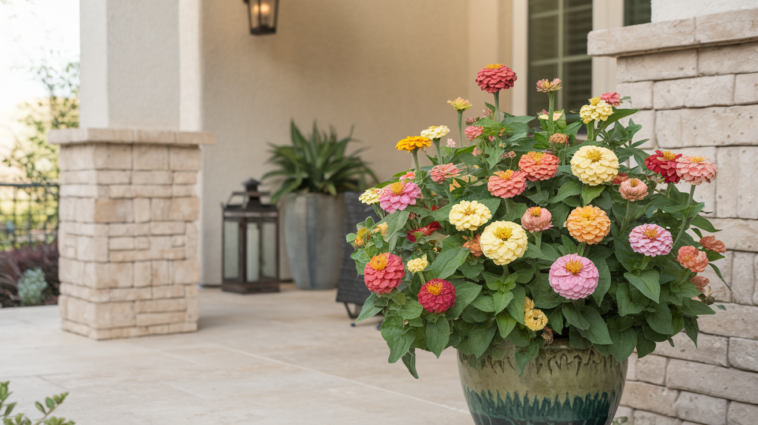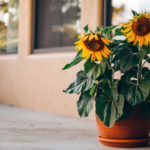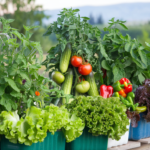Zinnias are a vibrant and easy-to-grow flower that thrive in containers, making them an excellent choice for patios, balconies, and small garden spaces. With their long-lasting blooms and bright colors, they bring a cheerful touch to any setting.
Whether you’re a beginner or an experienced gardener, growing zinnias in pots is a simple way to enjoy a continuous display of flowers throughout the summer.
Choosing the Best Zinnia Variety for Containers

Selecting the right zinnia variety ensures healthy growth and abundant blooms in a pot. While some zinnias grow tall and are better suited for garden beds, many compact varieties perform exceptionally well in containers.
Dwarf and bushy varieties like ‘Thumbelina,’ ‘Magellan,’ and ‘Profusion’ are perfect for pots because they stay under 18 inches tall and produce continuous blooms. These varieties create a full, lush display without the need for additional support. If you prefer taller zinnias, ‘State Fair’ or ‘Benary’s Giant’ can be grown in deep, sturdy containers, though they may require staking to keep them upright.
Selecting the Right Pot and Soil
Zinnias need room for their roots to spread, so choosing an appropriately sized container is essential. A pot at least 10-12 inches deep and wide is ideal for one plant, while larger containers can accommodate multiple zinnias. The pot must have drainage holes to prevent water from accumulating at the bottom, which can lead to root rot.
Using well-draining, nutrient-rich soil is key to growing healthy zinnias. A high-quality potting mix with added compost or organic matter ensures optimal growth. Avoid using garden soil, as it compacts easily and does not provide adequate drainage for potted plants. Adding perlite or sand to the mix improves aeration, keeping the roots healthy.
Planting Zinnias in Pots
Zinnias can be started from seeds or purchased as young plants from a nursery. If growing from seed, plant them directly in the pot, as they do not transplant well due to their delicate root system.
Fill the container with moist potting soil, leaving about an inch of space from the rim. Scatter the seeds on the surface, then lightly cover them with a thin layer of soil. Keep the soil consistently moist until the seeds germinate, which typically takes five to ten days. Once the seedlings reach two to three inches in height, thin them out to ensure proper spacing. Overcrowded plants compete for nutrients and are more susceptible to disease.
If using nursery seedlings, gently remove them from their containers and transplant them into the pot. Space them appropriately to allow airflow between plants, preventing fungal issues.
Providing Proper Sunlight
Zinnias thrive in full sun and require at least six to eight hours of direct sunlight daily. The more sun they receive, the more abundant their blooms will be. Placing the pot in a bright, south-facing location ensures the best growth. If growing indoors, a sunny window or supplemental grow lights help provide adequate light.
Watering and Maintaining Humidity
Consistent watering keeps zinnias healthy, but overwatering can lead to root rot and fungal diseases. Water the plants when the top inch of soil feels dry, ensuring the moisture reaches the roots without making the soil soggy. Watering at the base of the plant rather than overhead helps prevent fungal infections, such as powdery mildew.
During hot summer months, zinnias in pots may require daily watering, especially in smaller containers that dry out quickly. However, always check soil moisture before watering to avoid excessive dampness.
Fertilizing for Vibrant Blooms
Since potted plants rely on nutrients in the soil, regular feeding helps zinnias thrive. A balanced liquid fertilizer (such as 10-10-10) every two to three weeks promotes healthy growth and flower production. Switching to a phosphorus-rich fertilizer mid-season encourages even more blooms.
Organic fertilizers, like compost tea or fish emulsion, provide nutrients naturally while improving soil health. Over-fertilizing with high-nitrogen products should be avoided, as it leads to excessive foliage growth with fewer flowers.
Deadheading and Pruning for Continuous Flowers

Removing faded flowers, or deadheading, encourages zinnias to produce new blooms instead of directing energy toward seed production. Regularly snipping off spent flowers keeps the plant looking fresh and prolongs its blooming period.
If the plant starts to look leggy, trimming back long stems promotes bushier growth. Pruning in early summer helps the plant stay compact and full.
Preventing Pests and Diseases
Zinnias are relatively low-maintenance but can attract pests like aphids, spider mites, and whiteflies. Checking plants regularly and spraying affected areas with insecticidal soap or neem oil keeps infestations under control. Encouraging natural predators like ladybugs also helps manage pest populations.
Fungal diseases, such as powdery mildew and leaf spot, can develop in humid conditions or when airflow is restricted. Ensuring proper spacing, watering at the base, and avoiding wet foliage helps prevent these issues. If fungal infections appear, removing affected leaves and applying a mild fungicide may be necessary.
Overwintering and Saving Seeds
Zinnias are annuals, meaning they complete their life cycle in one season. However, you can save seeds from your plants to grow new zinnias next year.
Allow some flowers to remain on the plant until they dry out and turn brown. Once dry, remove the seed heads, break them apart, and store the seeds in a cool, dry place for future planting.
Repotting and Refreshing Soil
Zinnias grow quickly and generally do not need to be repotted during their short lifespan. However, if the plant outgrows its container or the soil becomes depleted, repotting into fresh soil can rejuvenate growth. When repotting, ensure the new pot has proper drainage and use a nutrient-rich potting mix for best results.
Conclusion
Growing zinnias in pots is a simple and rewarding way to enjoy vibrant blooms throughout the summer. With the right variety, proper sunlight, consistent watering, and occasional deadheading, these resilient flowers will provide a stunning display with minimal effort.
Whether placed on a balcony, patio, or windowsill, zinnias bring a burst of color to any space and are a perfect choice for container gardening.


